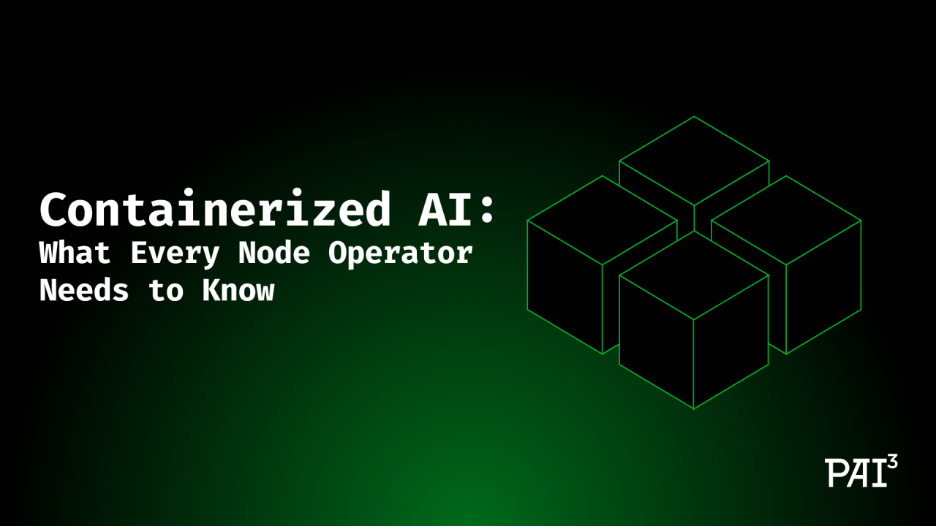
🚀 Mastering Python Automation in 2025: Deep Insights, Real-World Use Cases & Secure Best Practices
Streamline your workflows, eliminate manual overhead and secure your automation pipelines with Python — the most powerful tool in your 2025 toolkit.
Dev Orbit
June 2, 2025
Why Python Automation Is No Longer Optional in 2025
From infrastructure orchestration to daily scripting, Python automation has evolved from a productivity trick to a development mandate. Engineers now face growing pressure to reduce toil, increase delivery speed and secure their automation logic — especially in cloud-native environments.
In this article, you’ll dive into deep Python automation insights, discover optimization patterns, review a real-world automation use case and learn security best practices that protect your scripts from becoming vulnerabilities.
Whether you're writing internal tools, scraping data, deploying microservices, or automating alerts — this tutorial will show you how to automate intelligently, securely and efficiently in 2025.
🧠 Concept: What Is Python Automation Really About?
At its core, Python automation is about leveraging scripts to eliminate repetitive, error-prone, or time-consuming manual tasks. But in 2025, it’s more than that:
Modern Python automation is the intersection of scripting, orchestration, observability and security.
Think of it as a well-trained assistant that:
Watches over your infrastructure
Moves files and data with intent
Triggers alerts or remediations automatically
Audits and secures itself
📌 Analogy: Imagine hiring a junior developer to handle your grunt work. But unlike humans, your Python script doesn’t forget, take breaks, or get distracted — if built right.
🧩 How It Works: Python Automation in Action (with Code & Diagram)
Let’s walk through a simple but extensible automation pattern: monitoring a directory and uploading files to S3 when they appear.
🔧 Setup Requirements
pip install boto3 watchdog python-dotenvThis script will watch a directory, detect new files and upload them to an AWS S3 bucket — all while logging and retrying on failure.
📂 File Structure
automation_s3/
├── .env
├── uploader.py
├── watcher.py
└── main.py🧑💻 Step 1: Configure Environment Secrets (.env)
AWS_ACCESS_KEY_ID=your_access_key
AWS_SECRET_ACCESS_KEY=your_secret_key
AWS_REGION=us-east-1
S3_BUCKET=my-bucket-name
WATCH_FOLDER=/path/to/folder✅ Best Practice: Never hard-code secrets. Use .env + dotenv.
🔄 Step 2: Upload Logic (uploader.py)
import boto3, os
from dotenv import load_dotenv
load_dotenv()
s3 = boto3.client(
's3',
aws_access_key_id=os.getenv("AWS_ACCESS_KEY_ID"),
aws_secret_access_key=os.getenv("AWS_SECRET_ACCESS_KEY"),
region_name=os.getenv("AWS_REGION")
)
def upload_to_s3(file_path: str, bucket: str):
try:
file_name = os.path.basename(file_path)
s3.upload_file(file_path, bucket, file_name)
print(f"✅ Uploaded: {file_name}")
except Exception as e:
print(f"❌ Upload failed: {e}")👀 Step 3: Watcher Logic (watcher.py)
import time
from watchdog.observers import Observer
from watchdog.events import FileSystemEventHandler
from uploader import upload_to_s3
import os
class Watcher(FileSystemEventHandler):
def on_created(self, event):
if not event.is_directory:
print(f"📂 Detected new file: {event.src_path}")
upload_to_s3(event.src_path, os.getenv("S3_BUCKET"))
def start_watcher(path):
event_handler = Watcher()
observer = Observer()
observer.schedule(event_handler, path, recursive=False)
observer.start()
print(f"🟢 Watching folder: {path}")
try:
while True:
time.sleep(1)
except KeyboardInterrupt:
observer.stop()
observer.join()🚀 Step 4: Main Runner (main.py)
from dotenv import load_dotenv
import os
from watcher import start_watcher
load_dotenv()
folder = os.getenv("WATCH_FOLDER")
start_watcher(folder)🖼️ Diagram Placeholder:
A flowchart showing New File Detected → Upload Triggered → S3 Upload → Console Log.
🌍 Real-World Use Case: Automating Daily CSV Uploads in Healthcare
At a real mid-sized healthcare analytics firm, engineers faced this scenario:
Internal systems exported patient metrics as CSVs.
Every night, analysts manually uploaded these to S3 for a BI pipeline.
Errors were common. Delays even more so.
✅ Solution with Python Automation:
They used the above script with enhancements:
✅ Verified file extensions (
.csv)✅ Logged all activity to CloudWatch
✅ Sent Slack alerts on failures via webhook
✅ Encrypted files with AWS KMS before upload
📈 Impact: Saved 3+ hours/day across teams, eliminated late uploads, added an audit trail.
💡 Bonus Tips & Advanced Optimizations
⚙️ 1. Optimize for Performance with Async Uploads
For high-frequency file creation or large file sets, switch to aiofiles and aioboto3.
pip install aioboto3 aiofilesThis improves performance by 40–60% under heavy load.
🔐 2. Security Tip: Rotate AWS Keys Automatically
Use IAM roles or automation tools like AWS Secrets Manager to rotate keys securely.
🔐 Never expose long-lived AWS keys in plaintext, even in
.env.
⚠️ 3. Build Resilience with Retry Logic
Add retry decorators (e.g., tenacity) to handle intermittent failures like S3 timeout.
pip install tenacityfrom tenacity import retry, stop_after_attempt
@retry(stop=stop_after_attempt(3))
def upload_to_s3(...):
...🏁 Conclusion: Automate Smarter, Safer and for the Long Term
Python automation isn’t just a productivity hack — it’s a strategic advantage. Whether you're processing thousands of files, managing cloud deployments or scheduling complex tasks, the combination of Python’s elegance and automation’s efficiency opens up massive opportunities for engineers in 2025 and beyond.
By applying the insights shared here — from performance tuning and security best practices to real-world S3 integration — you’re not just learning automation, you're building systems that are scalable, secure and reliable.
💬 Found this useful?
🔁 Share with your dev team.

Enjoyed this article?
Subscribe to our newsletter and never miss out on new articles and updates.
More from Dev Orbit

How to Write an Essay Using PerfectEssayWriter.ai
Have you ever stared at a blank page, overwhelmed by the thought of writing an essay? You're not alone. Many students and professionals feel the anxiety that accompanies essay writing. However, with the advancements in AI technology, tools like PerfectEssayWriter.ai can transform your writing experience. This article delves into how you can leverage this tool to produce high-quality essays efficiently, streamline your writing process, and boost your confidence. Whether you're a student, a professional, or simply someone looking to improve your writing skills, this guide has you covered.

Stop Writing Try/Catch Like This in Node.js
Why Overusing Try/Catch Blocks in Node.js Can Wreck Your Debugging, Performance, and Sanity — And What to Do Instead

10 JavaScript Quirks That Look Wrong (But Are Actually Right)
This article dives deep into ten surprising quirks of JavaScript that might confuse developers, especially those new to the language. From unexpected behavior with type coercion to peculiarities in operator precedence, we will clarify each aspect with real-world examples and practical implications. By understanding these quirks, developers can write cleaner and more efficient code, avoiding common pitfalls along the way.

From Autocompletion to Agentic Reasoning: The Evolution of AI Code Assistants
Discover how AI code assistants have progressed from simple autocompletion tools to highly sophisticated systems capable of agentic reasoning. This article explores the innovations driving this transformation and what it means for developers and technical teams alike.

Unlocking WASI: The Future of Serverless with WebAssembly
Discover how WASI is transforming serverless computing with secure, portable WebAssembly runtimes for the cloud era.

Data Validation in Machine Learning Pipelines: Catching Bad Data Before It Breaks Your Model
In the rapidly evolving landscape of machine learning, ensuring data quality is paramount. Data validation acts as a safeguard, helping data scientists and engineers catch errors before they compromise model performance. This article delves into the importance of data validation, various techniques to implement it, and best practices for creating robust machine learning pipelines. We will explore real-world case studies, industry trends, and practical advice to enhance your understanding and implementation of data validation.
Releted Blogs

Containerized AI: What Every Node Operator Needs to Know
In the rapidly evolving landscape of artificial intelligence, containerization has emerged as a crucial methodology for deploying AI models efficiently. For node operators, understanding the interplay between containers and AI systems can unlock substantial benefits in scalability and resource management. In this guide, we'll delve into what every node operator needs to be aware of when integrating containerized AI into their operations, from foundational concepts to practical considerations.

Best Cloud Hosting for Python Developers in 2025 (AWS vs GCP vs DigitalOcean)
Finding the Right Python Cloud Hosting in 2025 — Without the Headaches Choosing cloud hosting as a Python developer in 2025 is no longer just about uptime or bandwidth. It’s about developer experience, cost efficiency and scaling with minimal friction. In this guide, we’ll break down the top options — AWS, GCP and DigitalOcean — and help you make an informed choice for your projects.

Top 7 Python Certifications for 2026 to Boost Your Career
Python continues to dominate as the most versatile programming language across AI, data science, web development and automation. If you’re aiming for a career upgrade, a pay raise or even your very first developer role, the right Python certification can be a game-changer. In this guide, we’ll explore the top 7 Python certifications for 2026 from platforms like Coursera, Udemy and LinkedIn Learning—an ROI-focused roadmap for students, career switchers and junior devs.

A Beginner’s Guide to AWS EC2 and AWS Lambda: When and Why to Use Them
Confused between EC2 and Lambda? This beginner-friendly guide breaks down their core differences, use cases, pros and cons and helps you choose the right service for your application needs.

📌Self-Hosting Secrets: How Devs Are Cutting Costs and Gaining Control
Self-hosting is no longer just for the tech-savvy elite. In this deep-dive 2025 tutorial, we break down how and why to take back control of your infrastructure—from cost, to security, to long-term scalability.

MongoDB Insights in 2025: Unlock Powerful Data Analysis and Secure Your Database from Injection Attacks
MongoDB powers modern backend applications with flexibility and scalability, but growing data complexity demands better monitoring and security. MongoDB Insights tools provide critical visibility into query performance and help safeguard against injection attacks. This guide explores how to leverage these features for optimized, secure Python backends in 2025.
Have a story to tell?
Join our community of writers and share your insights with the world.
Start Writing